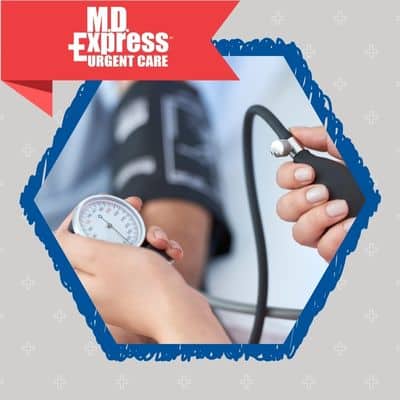In this blog, we will discuss two vital signs more in depth: blood pressure and heart rate.
Blood Pressure
Blood pressure is the measure of the force of blood against the walls of your arteries as your heart pumps it around your body. It is expressed as two numbers: systolic pressure and diastolic pressure.
Systolic pressure – This is the top number (e.g. 120) and indicates the pressure inside your artery when your heart is actively pumping blood.
Diastolic pressure – This is the bottom number (e.g. 80) and indicates the pressure inside your artery when your heart is refilling with blood.
A “normal” blood pressure is 120/80 mmHg. Blood pressure varies depending on a person’s age, health and activity level. It can be affected by your stress level, caffeine consumption and activity level that day, so do not stress if your blood pressure is slightly higher or lower than this normal reading. It is more important to know what your normal is so you can identify any changes or concerns.
Watch out for hypertension, or high blood pressure (140/90 and above). Having a consistently high blood pressure can lead to an increased risk of heart failure, stroke and other serious health consequences. Seek immediate medical attention if your blood pressure reads 180/110 or above.
On the other hand, hypotension, or low blood pressure, is a condition in which the blood pressure is consistently lower than normal. This can cause symptoms such as dizziness, fainting, or fatigue.
Blood pressure can be measured using a manual or digital sphygmomanometer, commonly known as a blood pressure cuff. It is important to have regular blood pressure check-ups, as high blood pressure often has no symptoms. It is also important to maintain a healthy lifestyle to keep blood pressure in check, such as maintaining a healthy diet, regular exercise, avoiding smoking and reducing alcohol consumption.
Heart Rate
Your heart rate is the number of times your heart beats every minute. A “normal” heart rate is between 60 and 100 beats per minute. Like blood pressure, heart rates will vary depending on a person’s age, health and activity level. More athletic individuals generally have lower resting heart rates.
If you are a healthy, athletic individual, your heart rate will likely drop below 60 when you are resting or sleeping. It will be greater than 100 when you are active and exercising. Here are some situations when your heart rate may be concerning:
- A rapid increase or decrease in heart rate after an illness or injury.
- Change in heart rate accompanied by other symptoms such as fatigue, chest pain, dizziness or difficulty breathing.
- A change in your vital trends if you have a family history of heart disease or heart attacks.
We hope this information helps! Don’t hesitate to ask your nurse or doctor about your vital signs. They are truly that: vital.


